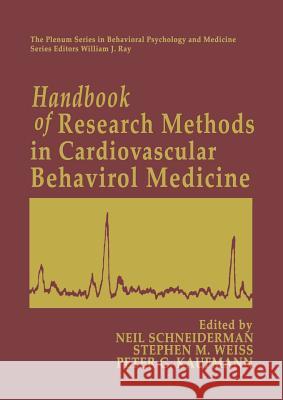Handbook of Research Methods in Cardiovascular Behavioral Medicine » książka
Handbook of Research Methods in Cardiovascular Behavioral Medicine
ISBN-13: 9781489909084 / Angielski / Miękka / 2013 / 717 str.
Handbook of Research Methods in Cardiovascular Behavioral Medicine
ISBN-13: 9781489909084 / Angielski / Miękka / 2013 / 717 str.
(netto: 1093,91 VAT: 5%)
Najniższa cena z 30 dni: 1148,61 zł
ok. 20 dni roboczych.
Darmowa dostawa!
Cardiovascular disease continues to be the number ioral medicine" was developed and shaped into the one source of morbidity and mortality in our coun- following definition: try. Despite a 35% reduction since 1964, these Behavioral medicine is the interdisciplinary field con- diseases, particularly coronary heart disease cerned with the development and integration of behav- (CHD), claim nearly 1,000,000 lives each year in ioral and biomedical science knowledge and techniques the United States (Havlik & Feinleib, 1979). relevant to the understanding of health and illness and The Framingham study, among others, has iden- the application of this knowledge and these techniques to prevention, diagnosis, treatment and rehabilitation. tified three major risk factors implicated in the de- (Schwartz & Weiss, 1978) velopment of CHD: smoking, elevated serum cho- lesterol, and high blood pressure (Castelli et at., This concept of "biobehavioral" collaboration 1986). Given that these factors account for less challenged scientists and clinicians of many disci- than 50% of the variance associated with CHD plines to consider how they might more effectively (Jenkins, 1976), it has become obvious that addi- develop diagnostic, treatment, and prevention tional risk factors must be identified if further pro- strategies by merging their perspectives to address gress is to be made in disease prevention and simultaneously, among others, behavioral, psy- control.











